The flag of El Salvador is a symbol of the nation’s enduring resolve and forward-looking ambition. It embodies El Salvador’s unique character and people’s collectiveness, representing its historical journey and commitment to future progress.
El Salvador Flag
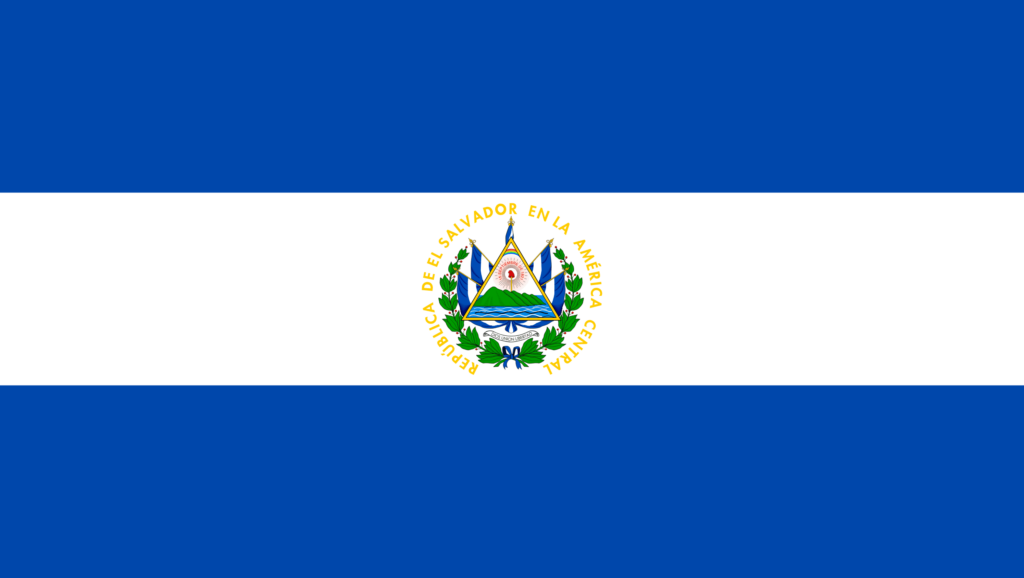
The flag of El Salvador features three horizontal stripes with the national coat of arms centered on the middle stripe, symbolizing freedom, wealth, and victory, reflecting El Salvador’s commitment to regional unity and its sovereign identity.
El Salvador Flag: Color Palette
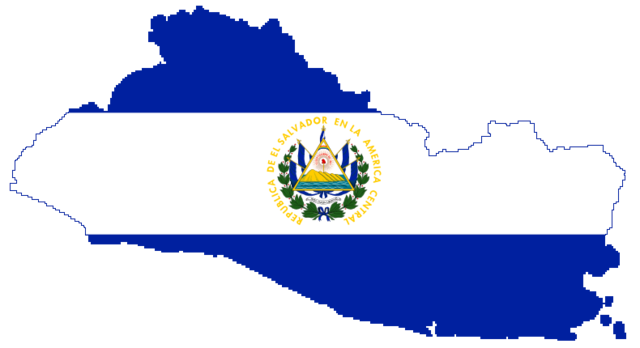
El Salvador Flag Emoji: 🇸🇻
El Salvador’s flag’s color palette is striking and symbolic, with each hue holding specific significance. This selection of colors enhances the flag’s visual appeal and carries deep meanings tied to the nation’s identity and values.
Meaning of Each Color
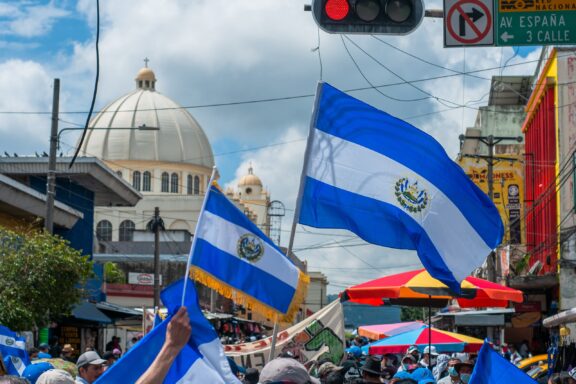
White
The white stripe in El Salvador’s flag represents peace and solidarity with the world. Historically, white has been a universal symbol of peace, purity, and harmony.
In El Salvador, this color signifies the nation’s desire for tranquility and harmony within the global community. It’s a visual commitment to fostering a peaceful coexistence internally and internationally.
Cobalt Blue
The cobalt blue stripes symbolize the skies of El Salvador and the two vast oceans that flank Central America: the Pacific Ocean and the Caribbean Sea.
This color embodies the depth and vastness of these natural wonders, reflecting the nation’s geographical beauty and connection to the broader region. Cobalt blue also represents the blue sky, a metaphor for limitless potential and the wide horizons that the nation strives towards.
El Salvador Coat of Arms
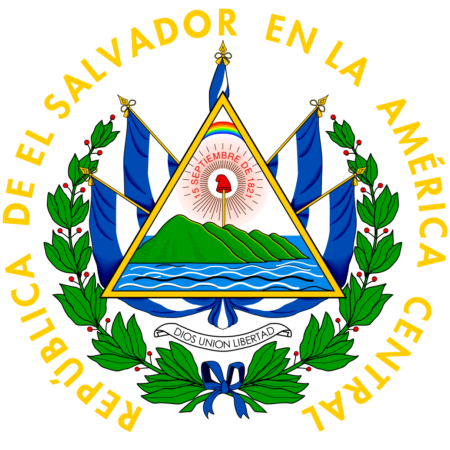
El Salvador’s coat of arms symbolizes the nation’s democratic values, regional solidarity, and rich indigenous heritage. It reflects El Salvador’s commitment to liberty and peace, integrating elements representing its historical alliances and governance.
As a national emblem, it underscores the country’s principles, connecting its past with its present and future ambitions.
Historical Evolution and the Meaning Behind Changes
The flag of El Salvador has undergone significant changes over time, each reflecting pivotal moments in the nation’s history. Initially, it mirrored the United Provinces of Central America’s flag, featuring blue and white stripes. The choice of these colors was influenced by the flag of Argentina, a symbol of independence in Latin America.
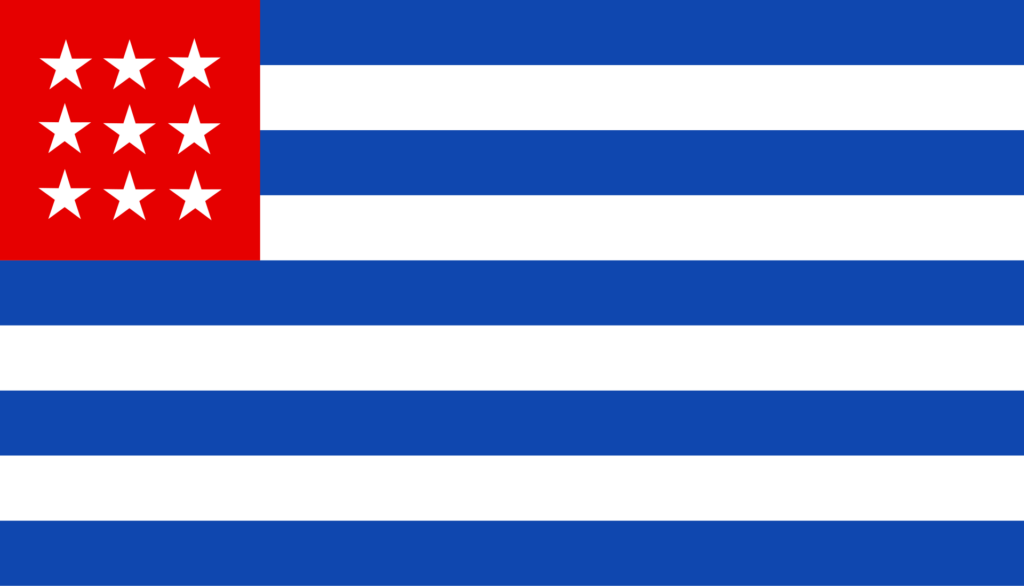
In 1865, a new flag with a different design was adopted to distance itself from the Central American Federation. This flag included a red stripe, symbolizing the blood sacrificed for freedom. However, this design was short-lived.
In 1912, El Salvador returned to the blue and white stripes, reinstating the connection to the original federation and emphasizing unity and peace. The cobalt blue was chosen to represent the sky and the Pacific Ocean, symbolizing aspirations toward grandeur and depth.
Each change in the flag’s design and color scheme responded to political shifts and evolving national identity, reflecting El Salvador’s journey towards independence and its standing in the Central American context.
Overall Symbolic Meaning of the Flag
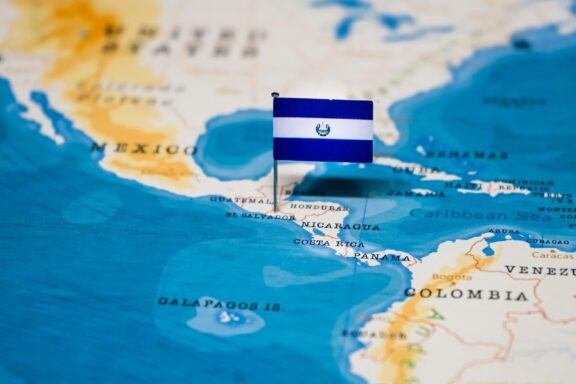
The flag of El Salvador stands as a beacon of national resilience and a vision for the future. It captures the essence of Salvadoran history and cultural richness, highlighting the collective determination and democratic ethos of its people.
This symbol represents national identity and signifies El Salvador’s commitment to progress and its significant place within the Central American context.
Similar Flags to the Flag of El Salvador
Here are the top flags that resemble El Salvador’s, each with its unique connection:
Nicaragua
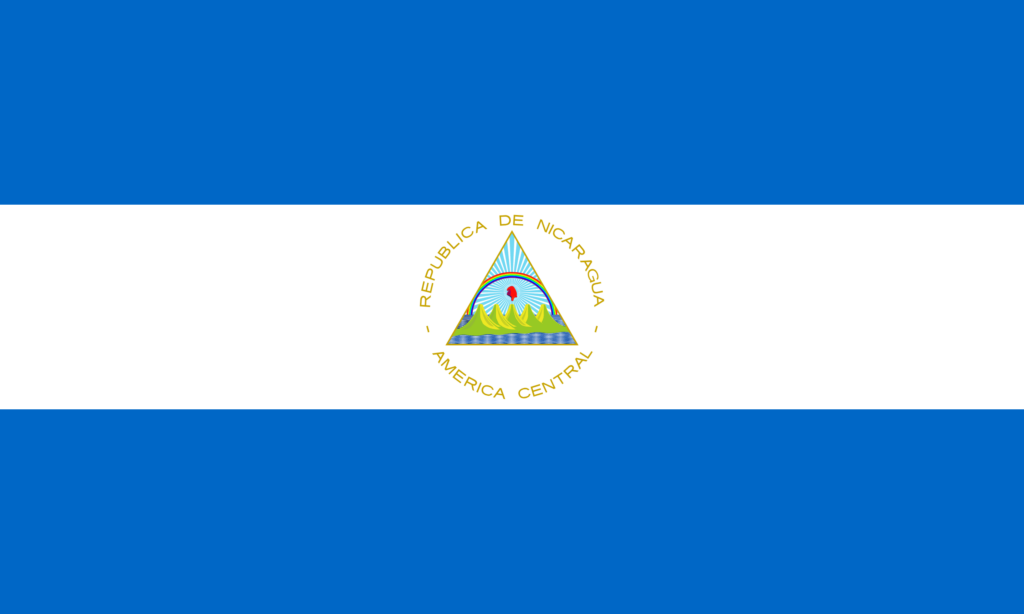
Nicaragua’s flag also features blue and white stripes, indicative of their mutual heritage as former members of the United Provinces of Central America, symbolizing their interconnected past and cultural links.
Honduras
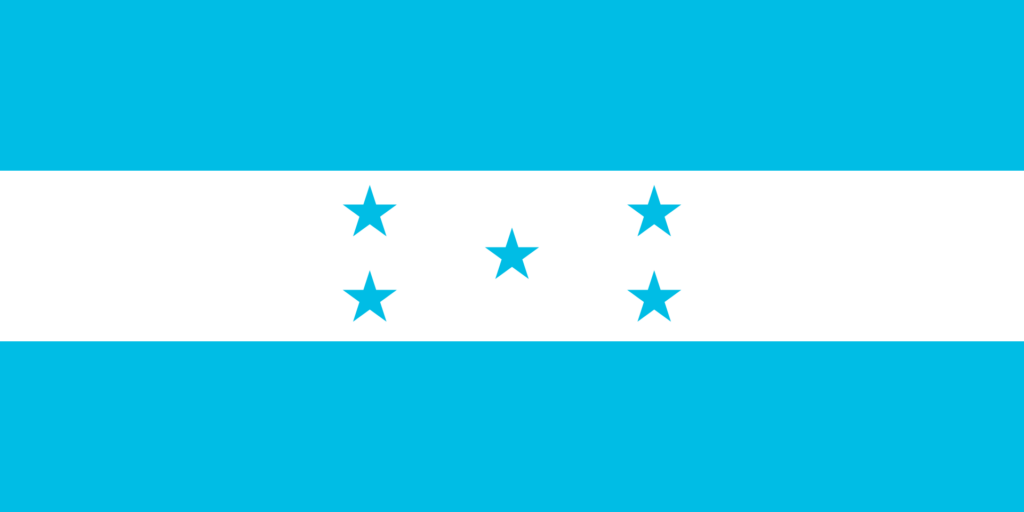
The flag of Honduras, with its blue and white stripes, resembles El Salvador’s flag. This similarity stems from their common origin as part of the United Provinces of Central America, reflecting their shared historical journey towards independence.
Guatemala
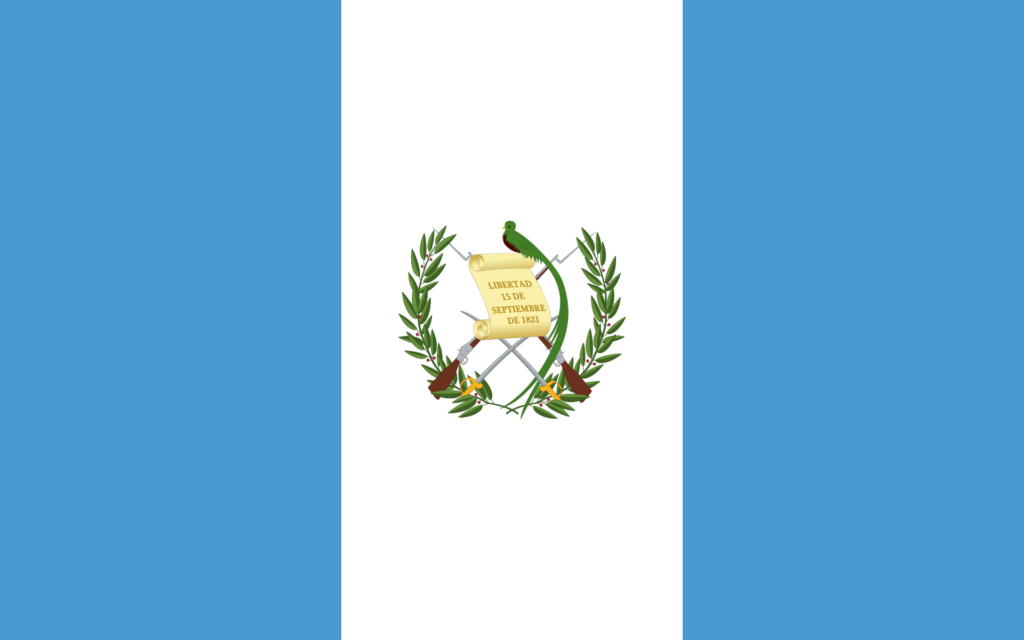
Guatemala’s flag, with blue and white colors, bears a resemblance to El Salvador’s flag. This likeness is rooted in their joint history within the United Provinces of Central America, illustrating their collective path to sovereignty and cultural kinship.
Conclusion
El Salvador’s flag, a vivid emblem of its history and values, is uniquely positioned in the global array of national flags. It embodies its people’s resilience, cultural richness, and collective vision, symbolizing national pride and unity.
Image Sources and Copyright Information
- Flags of El Salvador Waving in a Busy Street Scene: © Guayo Fuentes/Shutterstock
- El Salvador Flag Pin on Map: © hyotographics/Shutterstock1